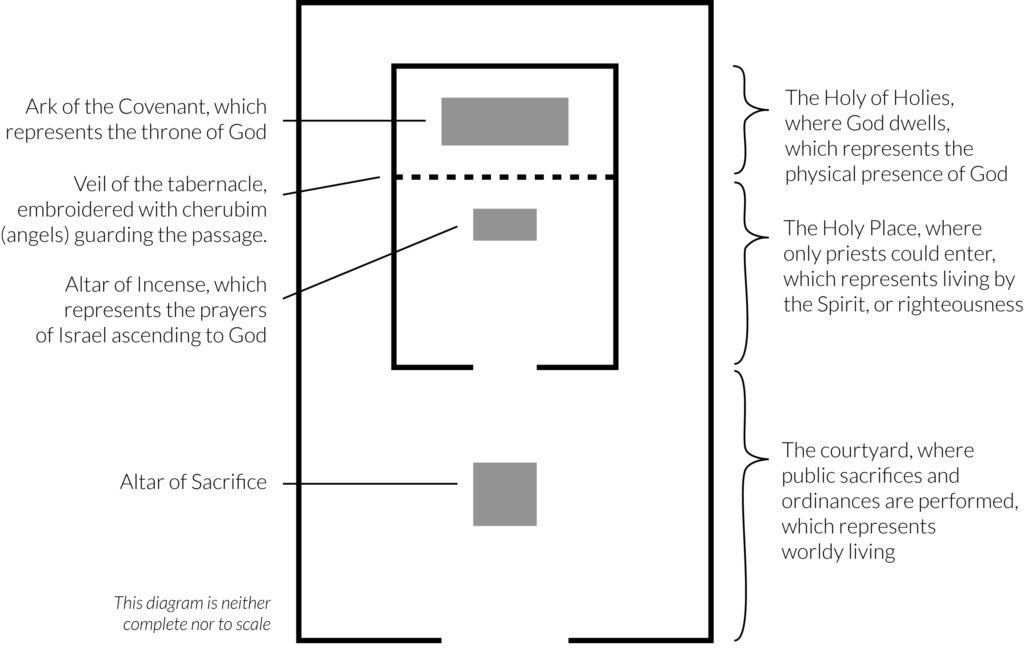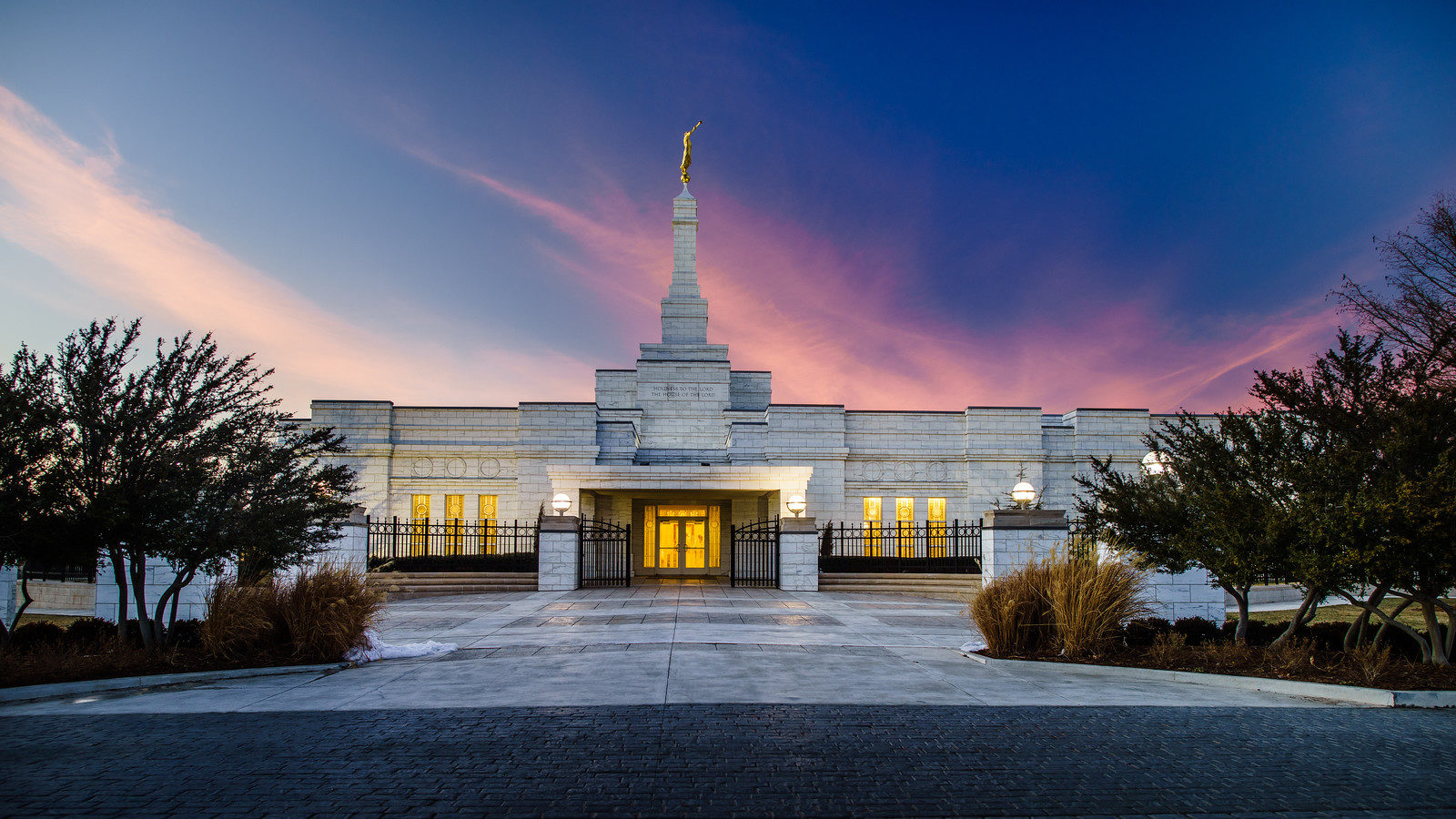- Introduction
- What If Truth Is a Person?
- The Ancient Roots of Person Truth
- Faith in ideas, or faithfulness to a Person?
- Knowing God vs. believing ideas about Him
- Person-truth does not give us control
- Knowing Person-truth through covenant
- Our on-and-off relationship with Person-truth
- The arch-nemesis of Person-truth
- What it means to be an authority on truth
- What is sin, if truth is a Person?
- Rethinking the Atonement of Christ
- Person-truth in an age of science and reason
- Conclusion
- Appendix A: Further Readings
- Appendix B: More on Greek and Hebrew thought
- Appendix C: Questions and answers
The distinction between idea-truth and person-truth can help us understand the holy temple. The concept of “sacred” knowledge is foreign to the modern mind. This is because the idea view of truth prioritizes public observations and rational arguments. If truth is the same anywhere and everywhere, then it must be verified across multiple contexts by independent observers. For this reason, the idea view of truth can lead us to value observations and methods that are transparent, replicable, and accessible to public scrutiny. Truths that can be observed only by a select few (such as members of a particular research club, university department, or religious organization) will always be treated as suspect—perhaps even “cultish.”
However, modern LDS temple worship is quite at home with a person view of truth that focuses on covenants with God. In a relationship between two people, there is a level of intimacy that is acceptable only after they have pledged themselves in marriage. In the context of marriage, spouses can know each other more richly and intimately than they could as mere friends or acquaintances. In fact, the Old and New Testament sometimes uses the word “know” to refer to sexual intimacy (for example, Adam “knew” Eve). Spouses cannot know each other (in the most intimate sense) without first covenanting unconditional fidelity to each other.
We can use this as a metaphor for our relationship with God. We can come to know God in ways that are sacred and not (appropriately) open to public scrutiny. In fact, we must pledge ourselves to God before we can intimately know Him. When we make promises with God in the temple, for example, we enter into a covenant relationship with Him. Within that context, God can reveal Himself to us most fully. This can help us better understand the endowment ceremony. The rituals and ordinances performed in the temple are deeply rooted in Israelite tradition and custom.
The temple symbolizes our search for truth
When traveling through the wilderness, the Israelites constructed a tabernacle where they could perform the rituals of the Law of Moses. This tabernacle had an exterior courtyard that surrounded a tent in the middle. In the courtyard there was the altar on which priests offered animal sacrifices. The tent in the middle was divided into two rooms by a veil. The first division was called the “Holy Place,” and contained an altar on which the priests burnt sweet-smelling incense. On the other side of the dividing veil, in the “Holy of Holies” or “the Holiest Place,” the Ark of the Covenant was placed, which represented the throne of God.((See, for example, Edward J. Brandt, “The Tabernacle of Ancient Israel,” Ensign, November, 1973, 36-38, or Sidney B. Sperry, “Ancient Temples and Their Functions,” Ensign, January, 1972, 67-72.))

Our modern temples have a similar architecture and follow the same symbolic pattern. When Adam and Eve were in the Garden of Eden, they walked and talked with God. When they transgressed God’s commandment, they left God’s presence. After we witness (and ritually reenact) the Creation and the Fall, we find ourselves on a symbolic journey back to God’s presence, through stages: we leave the Telestial world, enter into the Terrestrial world, and then pass through the veil and into the Celestial room of the temple. These three stages (Telestial, Terrestrial, and Celestial) roughly correspond to the courtyard, Holy Place, and Holy of Holies in the ancient tabernacle.
This symbolic journey represents our reconciliation with God. We move from a life of sin to a life of righteous living (cleansed and redeemed by Christ). From there we enter into God’s presence, where can converse with Him, learn from Him, and be with Him in the most personal and direct way possible. We are taught through symbols how to penetrate the veil as we approach His presence. The temple also teaches us about Christ, the Plan of Salvation, and the nature and possibilities of our relationship with God. While each of these teachings can be found in the scriptures, the temple adds further clarity.
However, all of this knowledge is guarded by sacred oaths and covenants. The layout and furnishings of the modern temple (and the Israelite Tabernacle) reinforce this. The Celestial room (or the Holy of Holies) represents full God’s presence. To get there, we must pass altars (or places of promise-making). We cannot make that sacred approach without first pledging ourselves (everything that we have) to God. Not only are these teachings protected by sacred covenants, we can only understand them through a lifetime of covenant-keeping, and of reenacting that symbolic approach to God’s throne.
Sacred truth in scripture
In the scriptures, prophets occasionally experienced what we ritualize in the temple. Peter, James, John, Nephi, the brother of Jared, Moses and others climbed mountains and spoke with God (or His messengers) face to face. They learned directly from the truth Himself, so to speak. The temple is often referred to as the “mountain of the Lord,” symbolizing these mountains of ancient times. These prophets then returned from the mountain with new understanding, a divine commission, and more knowledge than they could rightfully share with others. At least some of the knowledge they received from God in those encounters was not for public scrutiny.
For example, Peter, James, and John were led by Christ into a mountaintop, where they were visited in vision by Moses and Elias. Towards the end of the vision, the voice of God announced that Jesus was His Divine Son. We read, “And as they came down from the mountain, Jesus charged them, saying, Tell the vision to no man, until the Son of man be risen again from the dead” (John 17:9). Similarly, Nephi was led to the top of a very high mountain, where He saw a vision of the Christ’s life, birth, death, and resurrection, as well of the events of the last days. Nephi wrote, “And behold, I, Nephi, am forbidden that I should write the remainder of the things which I saw and heard; wherefore the things which I have written sufficeth me; and I have written but a small part of the things which I saw” (1 Nephi 14:28).
In the Book of Ether, we read that the brother of Jared climbed up the mount Shelem to ask God for help finding light for the barges he had built for his people. Christ showed himself to the brother of Jared, and talked with him face to face. Christ said: “Behold, thou shalt not suffer these things which ye have seen and heard to go forth unto the world, until the time cometh that I shall glorify my name in the flesh; wherefore, ye shall treasure up the things which ye have seen and heard, and show it to no man” (Ether 3:21). The brother of Jared saw many other great things, but was commanded to “seal them up” (Ether 4:5), because “[t]hey shall not go forth unto the Gentiles until the day that they shall repent of their iniquity, and become clean before the Lord” (Ether 4:6).
Arriving at the destination
Each search for truth has a culminating finale, or a destination. This differs depending on whether truth is a set of ideas or a person. Consider a well-known folk story about a Greek mathematician named Archimedes.((Alan Hirshfeld, Eureka Man: The Life and Legacy of Archimedes (New York, NY: Walker & Company, 2009).)) Archimedes discovered how to determine the volume of a complex object by immersing it in water and measuring displacement. As the story goes, he was sitting in the bath tub at the time of his discovery. He immediately jumped out and ran naked down the street, shouting ecstatically to all who could hear, “Eureka! Eureka!” which means, “I’ve found it! I’ve found it!” Archimedes was elated, because he could grasp with his mind an abstract, mathematical law. His discovery was considered the product of his observation and ingenuity. He immediately shared his discovery with the world.
In the person view of truth, our pilgrimage back to God’s presence takes place not just in our mind, but every aspect of our lives. We become remade as people through this journey. The culmination of this journey is ritualized in the endowment ceremony in our passage through the veil and into the Celestial room. This ceremony foreshadows the most intimate and sacred communion with truth possible: the kind of personal encounter experienced by Moses, as he spoke face-to-face with God on Mount Sinai, or the similar experiences of Abraham, Enoch, Moroni, and others. The culminating moment is not an ecstatic, Archimedean “Eureka!”, but a humbling, worshipful joy as we commune with our Father, and are someday invited to dwell in His presence.
This experience is not a discovery, but a revelation. It is not a product of our own ingenuity, but a gift made possible through the grace of Christ. The peace and joy of such an experience transforms the whole person, and is not intended for public scrutiny (except, at times, at the behest of God). It is certainly not the sort of experience one runs naked down the street shouting about, as Archimedes did. This intimate way of knowing God can be as personal and private as our interactions with our spouse in the bedroom—protected and guarded by similar sacred obligations and duties, ritually undertaken by covenant.
